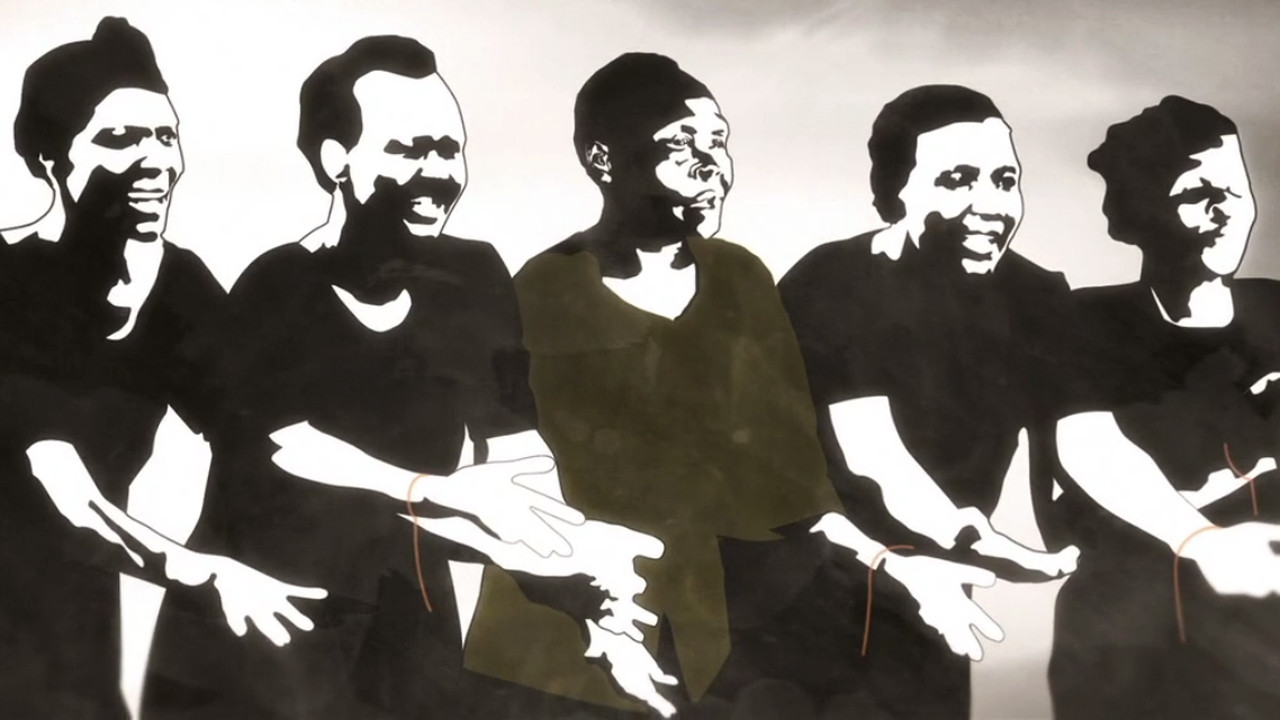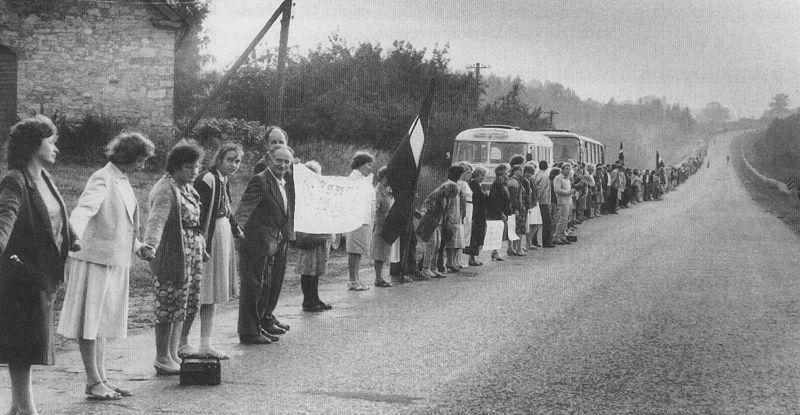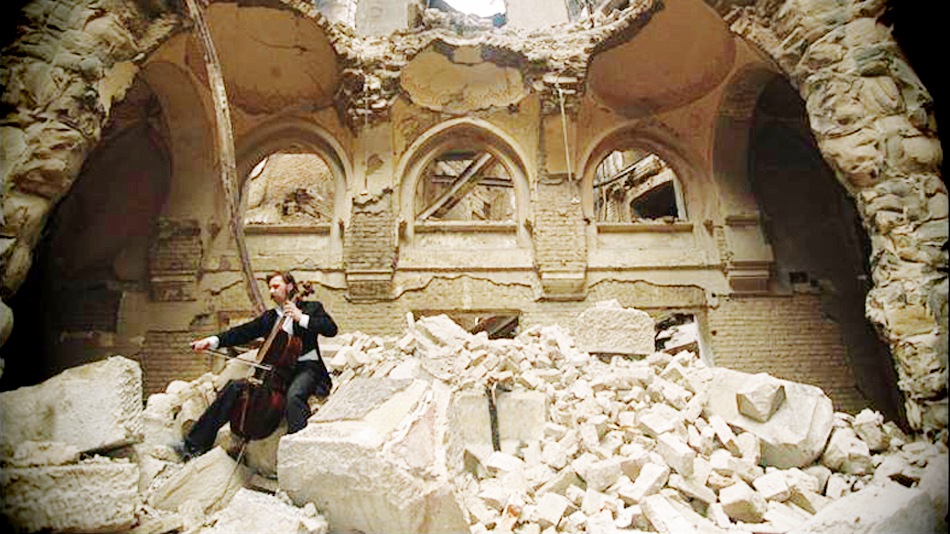by VANESSA CONTOPULOS
“The violation of human life and relationships creates a deep sense of irreplaceable loss. Violence destroys voice, belonging and place. In essence, the search for voice seeks to restore connection, meaning and purpose; foundational elements for authentic conversation in the social sphere.”
-Angela Jill Lederach and John Paul Lederach, When Blood and Bones Cry Out

Through the inspiration of the courageous and creative mothers who are singing their children free of the Lord’s Resistance Army, The Voice Project is asking the provocative question, “Can songs end a war?” By doing so it joins a growing group of academics, artists, activists and peace practitioners who are asking a similar question, with some even going one step further: Do music, art and the creative process have a unique and vital role to play in transforming societies trapped in patterns of protracted conflict and violence? What exactly are the processes by which these individuals find their way to a place of peaceful coexistence? How do these individuals and societies heal from the trauma of direct and structural violence? Can music help build peace?
The purpose of this article is to offer an overview of the growing field of music for conflict transformation. Within that context, it will then highlight the role an organization such as The Voice Project can play in helping lead the way in the exploration of the potential of music to transform conflict.
As we begin to look at spaces where music can be transformative and healing, it is important to acknowledge that music can also be used in non-peaceful ways and can both incite and support violence. Furthermore, the use of music is not appropriate for every situation of conflict transformation. What we shall explore here is its relevance as an important tool to be considered when planning and supporting programs that contribute to building peace.
This is a new and developing area of practice and study. Musical expression is to be found in every culture. In our lived experience we can all give examples of music’s power to change our emotional state. As Peter Gabriel suggests, there’s something about music that has the capacity to connect directly to our emotions. The energies and resources we tap into when we create music find their roots in the same parts of us that we need to engage with when we try to create peace. Developing our awareness of how our relationship with music is connected with our relationship with peace and conflict is the song we must now try to write.
“A lot of the ways that people communicate are cerebral. They go through the head. One of the interesting things about music is that it seems to plug directly into the emotion”
-Peter Gabriel
Although it’s peanuts in comparison to what is spent on war, the international community invests huge amounts each year in a broad range of peace efforts. There is no shortage of interest in and investment in greater understanding of the complexities that contribute to building peace. Within these efforts, there is a group of academics, artists, activists and peace practitioners calling on a need for an increased attention to the creative process within peace building and conflict transformation. They are doing so because they have seen first hand the significant role that music, poetry and art play in communities emerging from conflict. More specifically, these individuals have come face to face with a lived reality that echoes the often overlooked truth that re-building relationships often has more to do with drinking tea together and the space provided for creative expression, than it does with holding conferences and workshops.
“The artistic five minutes, I have found rather consistently, when it is given space and acknowledged as something far beyond entertainment, accomplishes what most of politics has been unable to entertain.”
-John Paul Lederach
All too often art, poetry, and music are associated with and limited to the spheres of leisure and entertainment when in reality they have the potential to capture the human spirit, to inspire hope, and to create change. Around the world, people who recognize these grounded truths are gathering stories of creative transformation in order to lift up these practices as significant tools for building peace. They are raising awareness of these issues and calling us to listen to the fact that these stories and examples contain valuable lessons and signposts directing us towards the transformation and healing of broken spirits, relationships, lives and communities.
When considering the role of music in building peace, the stories that often come to mind are the stories of music used in non-violent resistance, music for social change. When we consider the role that music has played in social movements, it seems that music is supporting and creating change in a number of ways. As often happens with process of music-making, there are many layers to be found within that apparently single act. It’s important to note that it’s not necessarily the musical composition itself nor the piece of art created that is of greatest significance but the act of creation, the space that opens up through the creation. The music is merely the catalyst for transformation.
Music has a great potential to unify people. Those who have sung in a choir, played in a band or even attended a concert have experienced this. Music is so powerful because it affects us on many different levels. It affects us physiologically. We feel music in our bodies. It changes our heart rate, our feet tap and our heads nod to the beat. Music affects our emotions and memory. When the sound comes in through our ears it is processed in the part of our brain called the Temporal Lobe which is directly connected to and continually sending messages to the Hippocampus which is the part of our brain that processes emotions and where we hold memory. When the act of creating music together or experiencing music together is connected to a certain idea or social movement it can be quite powerful.
Music and, in particular singing, played a significant role in unifying the non-violent movement of Estonia, Latvia and Lithuania in the resistance of the communist regime. The people gathered in masses of tens and hundreds of thousands to sing national folk songs and resist the Soviet regime. The role of singing was so central to the movement that the period of resistance has come to be known as the Singing Revolution.

The Baltic Way chain at the peak of the Singing Revolution
Music played a significant role in the Civil Rights movement in the United States. From the songs of famous musicians on stage to the anthems of protestors on the streets, it was often the music that helped to unify and spread the message of the movement. When we hear mention of peace songs, ‘Kumbaya’ is often referred to mockingly, as if it’s just wishy-washy, fluffy nonsense. Civil Rights veteran Vincent Harding bristles every time he hears such comments. The shared act of singing ‘Kumbaya’, or the anthem of the movement, ‘We Shall Overcome’, served as a ritual; it was a profoundly powerful moment of connection to one another, to their goal and a space for looking toward a new future with hope.
Another way that music has been powerfully used in non-violent resistance and creating social change is through the music serving as a vehicle that could carry a particular message. These messages have been conveyed through actual sung lyrics or words paired with music. There are also many traditional approaches that use specific instruments and styles of playing to communicate a message of solidarity or resistance.
The history of the Negro Spiritual is a story of creative individuals understanding the power of music to act as the carrier of messages. The singing was a kind of life force and the songs were subversive, full of hidden meanings that were meant to bring freedom. The song ‘Follow The Drinking Gourd’ is full of hidden meaning. The first verse including the words, “When the sun come back, When the firs’ quail call, Then the time is come foller the drinkin’ gou’d”, suggests escaping in the Spring and heading North to freedom, The Drinking Gourd being a code name for the Big Dipper, which points to the North. Modern echoes to this can be found in similar songs in apartheid South Africa.
Most recently the international community witnessed the potential of music to carry a message as hundreds of musicians shared their music via the Internet and social media sites in the Arab Spring. Musicians across the region used the vehicle of music and their voices and the structure of song to challenge their oppressive structures, to ask questions, offer support across borders and ultimately to give voice to messages they had been unable to express in other ways.
Music can also be used as a tool for shifting and changing relationships. In my own work using strategies from music therapy in facilitated dialogue, I have seen that music can be used to create a space in which people can experience one another in new ways. I have also witnessed music’s ability to do what Peter Gabriel describes, “to plug directly into the emotion”, and in doing this, shift a person into a new way of being in which they could listen to another person differently and begin to build or change a relationship.
Musician, peace activist and former “Lost Boy” of Sudan, Emmanuel Jal describes a story in which music moved him in such a way that he began to shift his perception of “the other”. Jal admits that he willingly joined the Sudan People’s Liberation Army as a child soldier after witnessing his mother being violently kicked by a group of Arab men. From this moment, these people became his enemies. He could not imagine that there was anything good in them and he wanted revenge. This was until one day he overheard the music of these “enemies” and he found himself liking and connecting with this music. It was shocking for him because he could not imagine that he would have anything in common with these individuals. He could not imagine that there was anything good at all in them and yet he liked the music they were playing. What began to occur in that moment for Jal was what John Paul Lederach describes as “the capacity to imagine ourselves in a web of relationships that includes our enemies”. The Moral Imagination.
In the same way as art or beauty, music carries within it the potential to interrupt patterns of familiarity. It can create moments of transcendence during which we are able to view what we felt was known territory from a new and enlightening perspective.
There are a number of current organizations and movements that utilize music to help create a space in which relationships might be changed and transformed. Often the musicians explore larger themes through the making of music, such as playing a hybrid of different styles of music in order to demonstrate or serve as a metaphor for how divided societies might co-exist. At the same time, these projects often bring together musicians from different parts of these divided societies with the hope that the space created through music will serve as a place where people will begin to encounter one another.
Music also has an important role to play when it comes to healing wounded communities. Unspeakable trauma is referred to in such a way, because it often lies hidden, unwilling or unable to find its voice through everyday expressions of the spoken or written word. Healing from this trauma is not a neat 5 step process. It shares that characteristic with the wider process of transforming conflict and building peace. With both there is no simple, neat, easy, convenient, one-size fits all solution. Again, there is space for creativity and for music.
There are countless stories of places in which music has been used as a “voice” of grief or trauma or hope in the face of devastating loss and conflict, such as the story of Vedran Smailović, known as the cellist of Sarajevo.

Some of the earliest human writings reference the power of music to influence the body, mind and spirit. The use of music in healing through ritual can be seen throughout history and across cultures. The field of music therapy is a professional field that is built around this fundamental belief in the healing capacity of music. For people who have experienced unspeakable trauma, music again can play many roles in the healing process. When a person has undergone trauma, they are often disconnected from their bodies. The act of singing and the fact that one must breath in order to sing, can bring a person back into their body and therefore back into connection with their own humanity. Trauma also robs people of their sense of what is normal and robs them of their power. The act of writing a song, learning or playing an instrument all have the potential to give, in a very practical way, an opportunity to begin to regain a sense of normality, to find their voice and their power.
Finally, as we seek to elevate the role of music in building peace and supporting conflict transformation, it is interesting to make the connection between the need for increased attention to traditional or indigenous approaches to building peace and healing and the need for these creative approaches. Many indigenous and traditional approaches are creative and often times musical at their core. We can look to and elevate these rituals and practices, like the Dwog Paco songs, in order to better understand the creative process of building peace and as we elevate the role of creativity and music in peace building we can in turn elevate and draw from a world-wide knowledge transformation and healing.
As we explore the many levels at which music can be transformative, we see through a new lens all the ways in which the Dwog Paco songs are building peace. The act of singing together creates space for both personal and group healing. Both the music-making and the music itself, unifies the women and through that unity, gives them a collective power. They now have a collective voice and a clear message of reconciliation and homecoming. The music is clearly acting as a vehicle to carry their message. Through the radio and the initiatives of The Voice Project, these women’s message, carried by their music, is being amplified. This is incredibly powerful on many levels. At the level of individual healing and collective healing, as mentioned earlier in regard to trauma, these women are regaining voice and power. It is also significant at a level of participation and representation within society. Women’s voices are often left out of peace negotiations and here these women are playing an important role in what is hopefully the end of conflict in their region.
It is clear in my mind that we do not need to ask if music has a role to play in conflict transformation. It has an incredibly powerful and unique role to play.
“The real question is why has it taken so long? It is high time for the human brain and heart to join forces to explore and apply the power of music for peaceful and effective conflict transformation.” –Olivier Urbain
Music weaves its way through every twist and turn of our journeys through life. It provides the soundtrack for both our darkest and most shining days. It resonates, sustains and inspires. We live in a world where so many voices remain unheard. When we deliberately create the space in which we give voice to that silence, the beauty of the human choir deepens. The louder the choir sings, the further those voices will carry.
Vanessa Contopulos is a Board-Certified Music Therapist with a Master’s degree in Conflict Resolution and serves as an advisor to The Voice Project.
